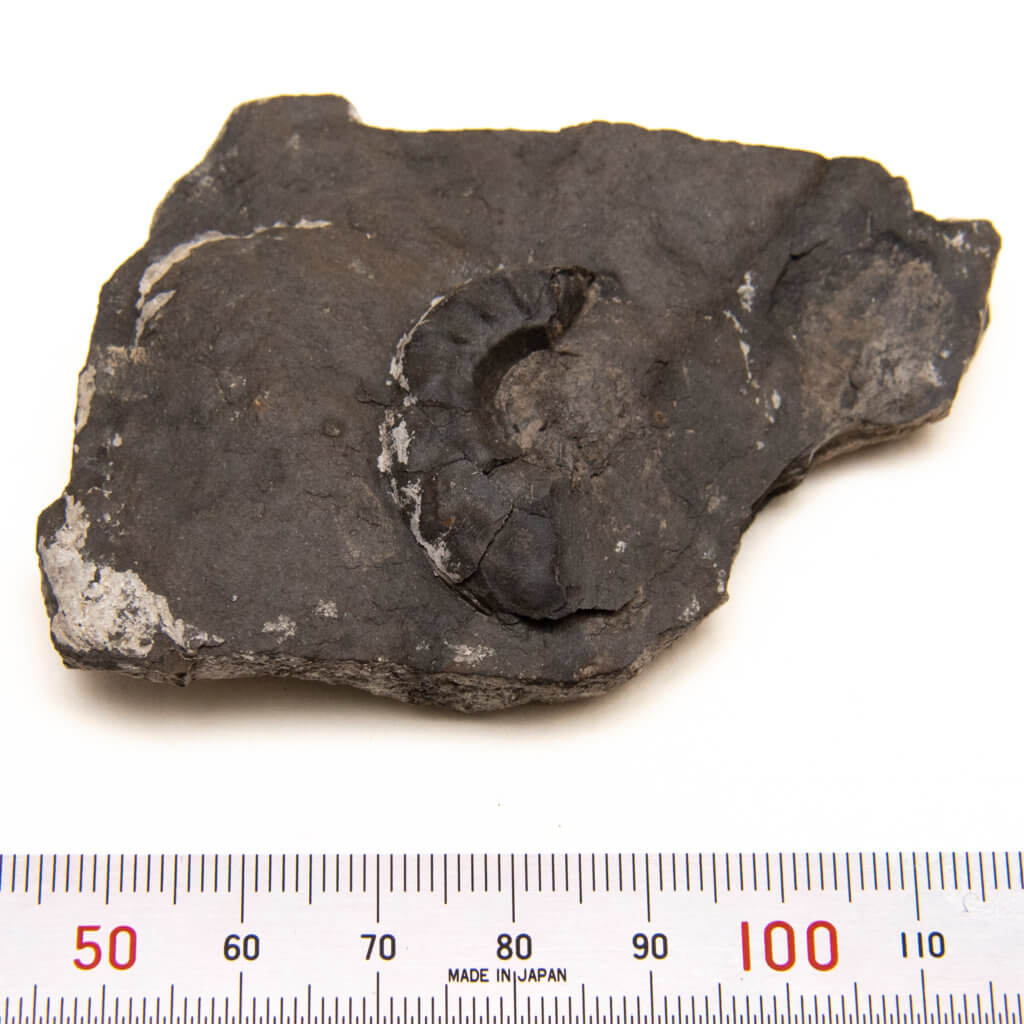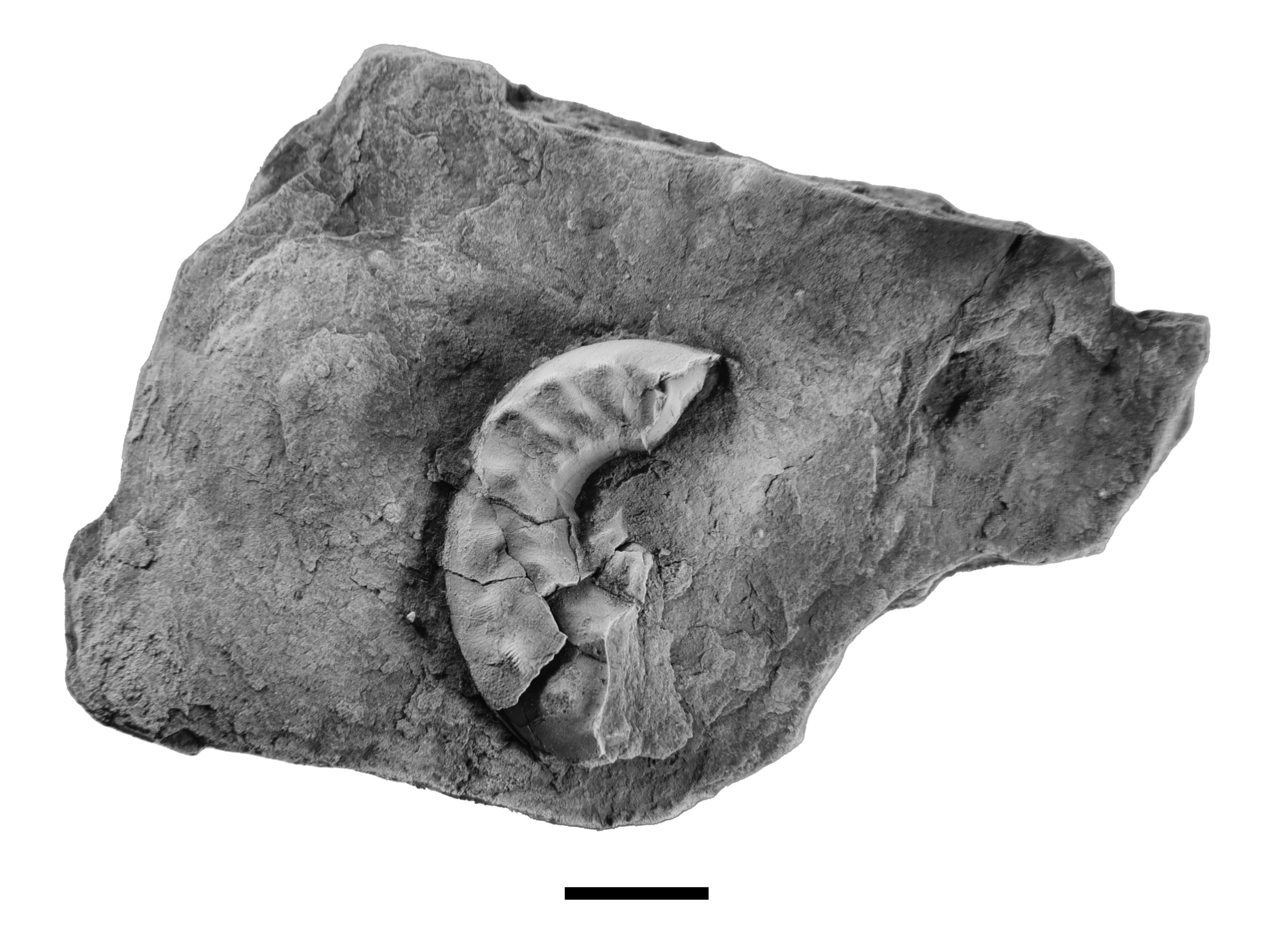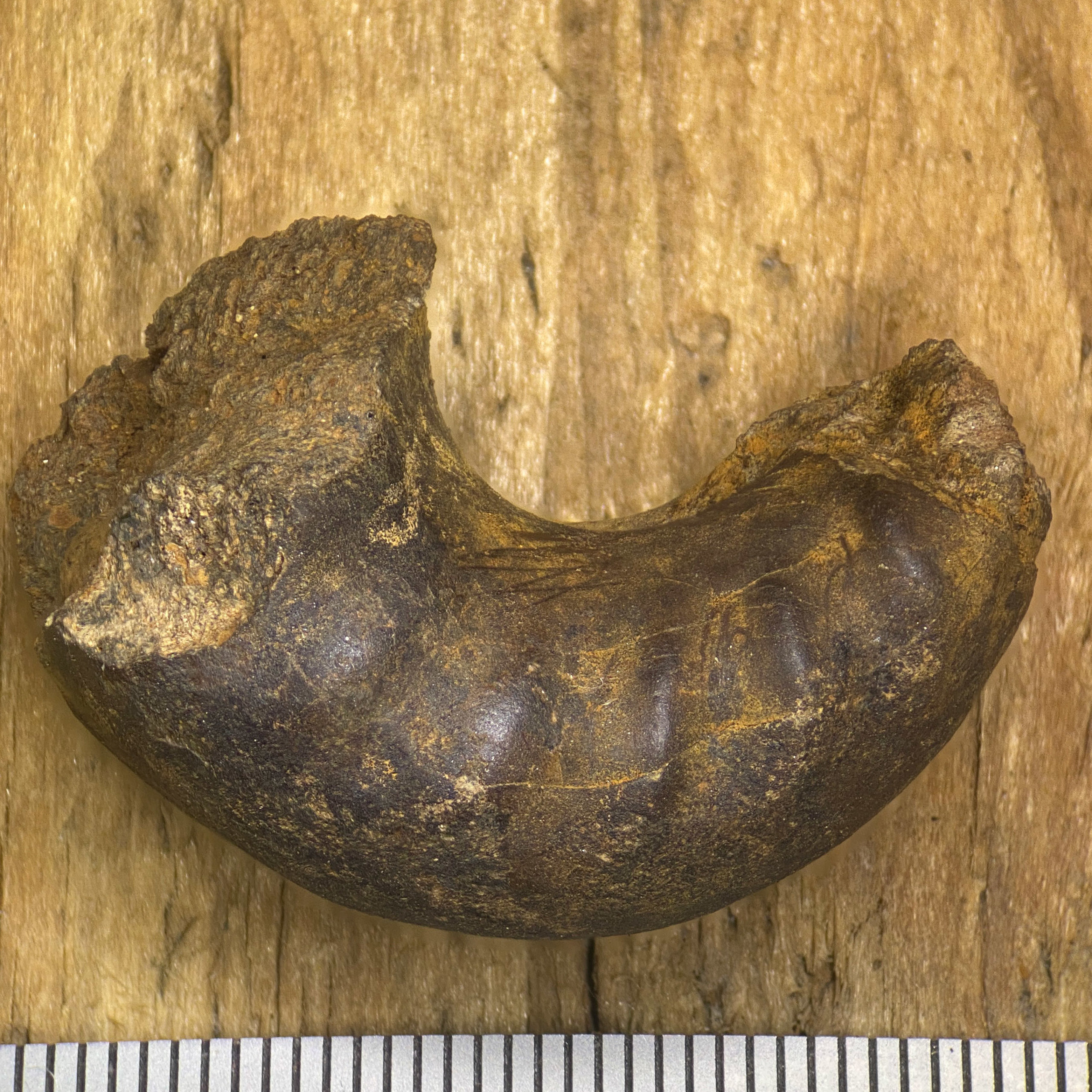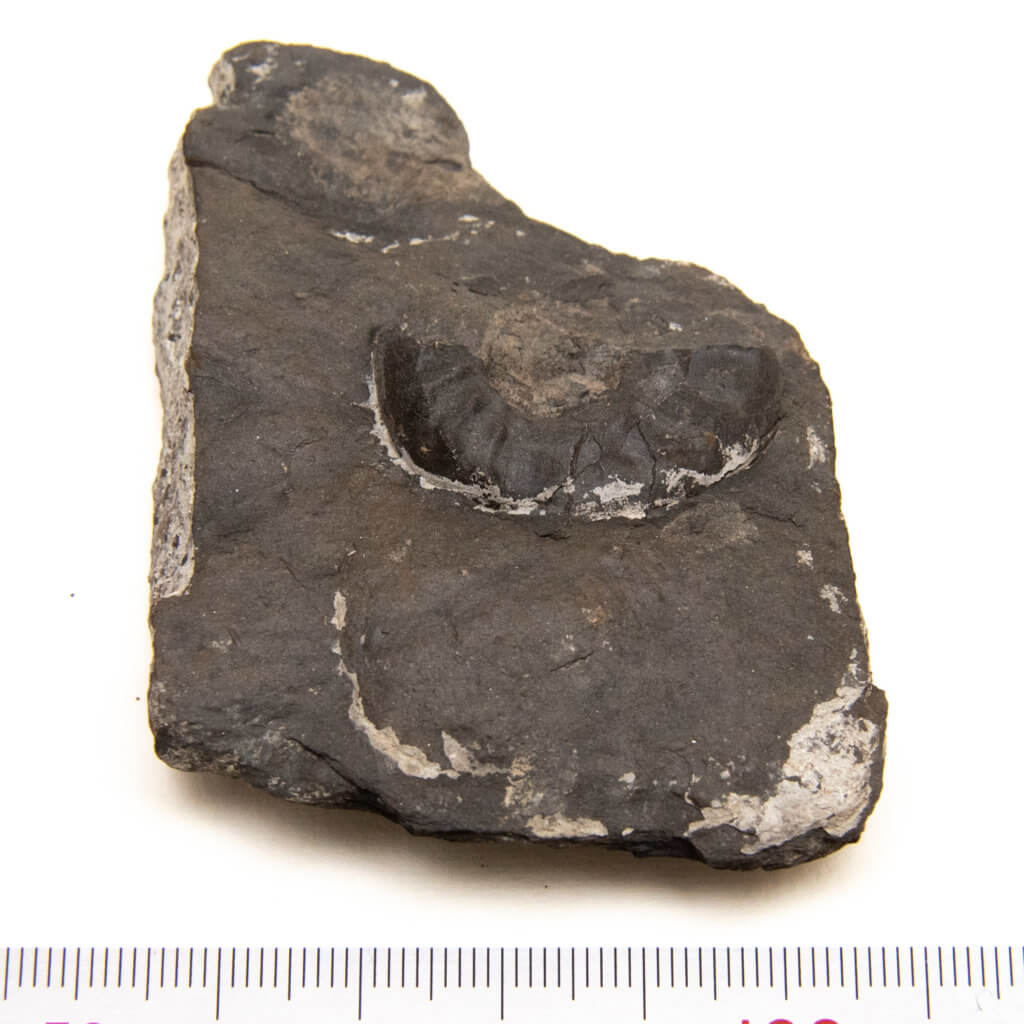The extinct cephalopod Metacoceras clinocostatum is a species commonly found in Brush Creek limestone. Compared to other examples of the genus Metacoceras, it is very small in size. I was apprehensive about identifying these. In the past, I believed they were the inner whorls of larger specimens. But, these are small cephalopods.
Metacoceras clinocostatum
Scientific Classification
Kingdom:
Animalia
Phylum:
Mollusca
Class:
Cephalopoda
Order:
Nautilida
Family:
Tainoceratidae
Genus:
Metacoceras
Species:
clinocostatum
1982 Sturgeon et al.
The common local cephalopod genus, Metacoceras, lists twenty-seven genera on Fossilworks, inside of the Paleobiology Database. But for whatever reason, M. clinocostatum is not listed as one of the genera in the database. It was clearly defined as a new species by Sturgeon et al. in a research article published in November of 1982, ahead of the publication of Pennsylvanian Cephalopods of Ohio. The authors used Metacoceras perelegans as a basis for their new species. The type locality is the Brush Creek Member (1979) in Ohio. There is no specific geographic location given. Its name comes from two Latin words, clino, which means included, and coctatus, which means ribbed.
The holotype is specimen OSU 28971-A. The specimen is 17 mm in diameter and has an 8 mm shoulder-to-shoulder umbilical diameter.
Dernov in 2021 suggested that these specimens may belong to Gzheloceras and/or Pseudogzheloceras. He states that massive traverse ribs on the flanks are not typical for Metacoceras. I believe that Metacoceras in its current form is rather crowded and could use a review.
Photos of Metacoceras clinocostatum, CG-0169
I recovered this specimen from naturally chemical-altered limestone. This type of matrix is soft and readily preserves intricate details. After needing identification for quite some time, it is the first declared specimen in the catalog of M. clinocostatum. I based my identification on reported populations of specimens in the publication “Pennsylvanian Cephalopods of Ohio”, where the authors reported 114 specimens from the Brush Creek limestone. In reading the description, I found that the largest diameter paratype specimen was only 25 mm in diameter. Scale marks in the photo are 0.5 mm each. The specimen consists of 2/5 of a whorl. The umbilical depression is also sharply visible.

Photos of Metacoceras clinocostatum, CG-0170
This is a specimen recovered from the Pine creek limestone. The specimen has 3-6 visible ribs on the flank. It consists of 1/2 of a whorl. There appears to be some shell material left. There is a well-defined umbilical shoulder. The specimen feels heavy and is likely embedded in an ironstone concretion.


References
- Dernov, V., 2021, Pseudogzheloceras — a new genus of Carboniferous nautilids (Cephalopoda) from Europe and North Africa. GEO&BIO, vol. 21, pp. 87–94.
- Sturgeon, M. T., Windle, D. L., Mapes, R. H., Hoare, R. D., 1982, New and Revised Taxa of Pennsylvanian Cephalopods in Ohio and West Virginia, Journal of Paleontology, Vol 56, No. 6, November 1982, pp. 1453-1479
Further Reading
- All cataloged specimens of Metacoceras clinocostatum.




